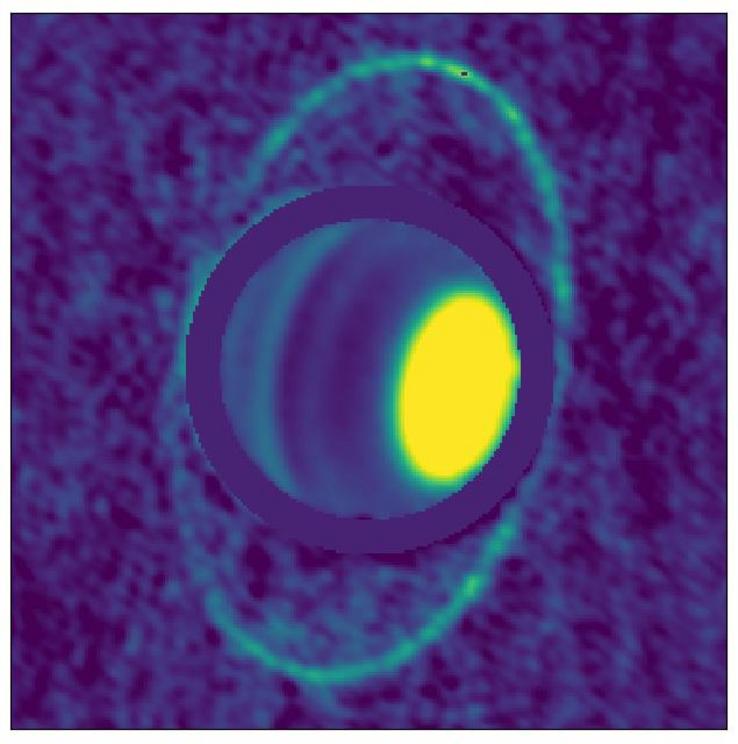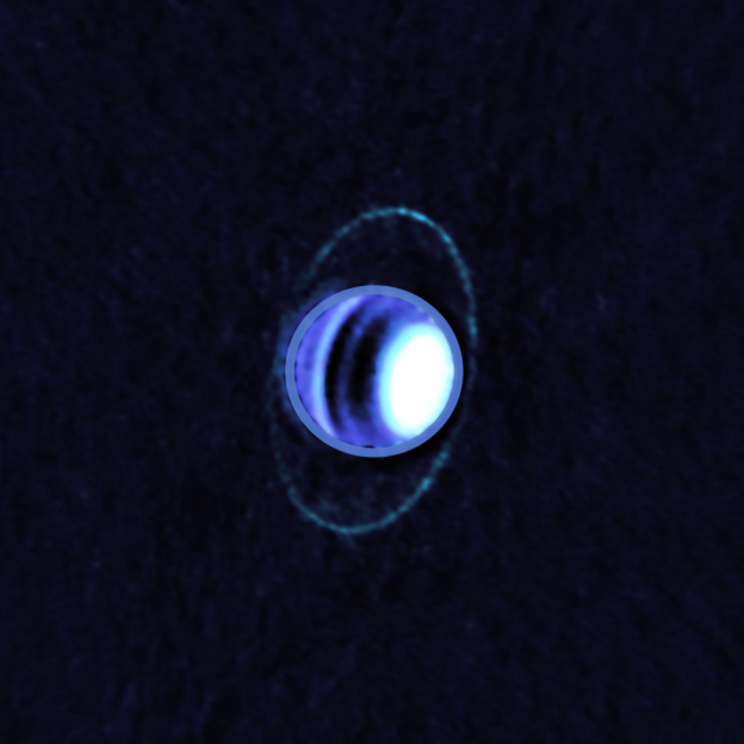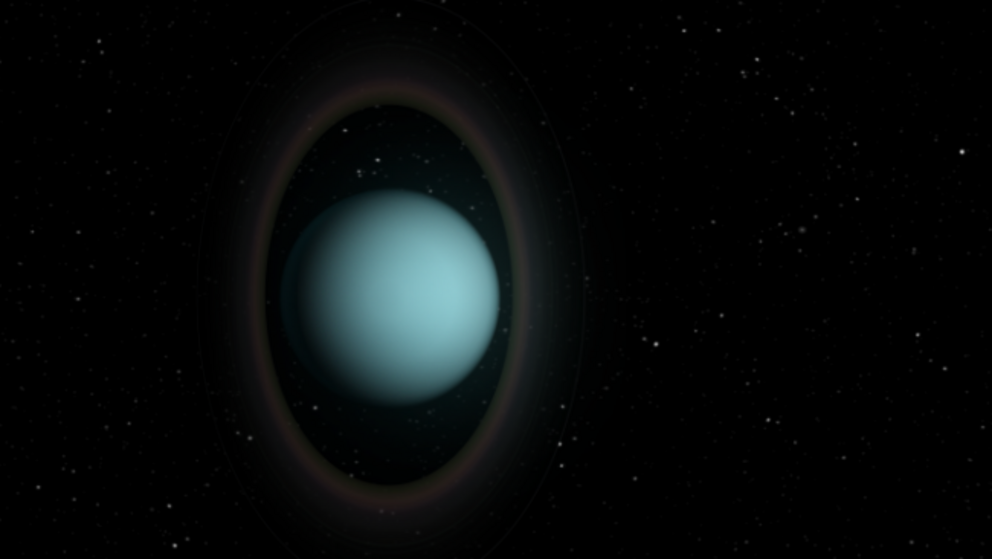A mysterious glow warms rings of Uranus
Some sort of a heat wave warms the rings of Uranus, even though the planet orbits far away from the sun.

A composite image of the atmosphere and rings of Uranus seen in thermal emission. (Image: © UC Berkeley image by Edward Molter and Imke de Pater)
New heat images of the planet, obtained by two telescopes in Chile, reveal the temperature of the rings for the first time: minus 320 degrees Fahrenheit (minus 195 degrees Celsius), or the boiling temperature of liquid nitrogen.
While that sounds cold by Earthly standards, consider that most of space is much colder, approaching a temperature at which atoms stop moving. This point is called absolute zero, which is roughly minus 460 F (minus 273 C).
Related: Photos of Uranus, the Tilted Giant Planet
And Uranus itself is located pretty far out in the solar system, where the planet receives only a fraction of the heat from the sun that the Earth receives. The ice giant orbits our star at an average distance of 19 astronomical units (AU), with each AU equivalent to the average distance from the Earth to the sun, or 93 million miles (150 million kilometers).
The scientists who captured the new images said they aren't sure what's causing the relative warmth. But the weird temperature proves that the brightest and densest ring at Uranus (also known as the epsilon ring) is very different from other ring systems in our solar system.
Every giant planet in our solar system — Jupiter, Saturn, Uranus and Neptune — has its own set of rings, but Saturn's are the most spectacular and best-understood. That's because they are easily visible even with just a small telescope and because NASA's Cassini mission studied them up close. But Saturn's rings are quite different from those at Uranus.

Uranus and its rings as seen in radio wavelengths by the Atacama Large Millimeter/submillimeter Array (ALMA) in December 2017. (Image credit: ALMA (ESO/NAOJ/NRAO), E. Molter and I. de Pater)
"Saturn's mainly icy rings are broad [and] bright and have a range of particle sizes, from micron-sized dust in the innermost D ring, to tens of meters [or feet] in size in the main rings," study co-author Imke de Pater, an astronomer at the University of California, Berkeley, said in a statement. "The small end is missing in the main rings of Uranus. The brightest ring, epsilon, is composed of golf ball-sized and larger rocks."
The epsilon ring also differs from rings observed at the other giant planets. Jupiter's rings are made of particles that are roughly a thousandth of a millimeter in diameter each, while Neptune's rings are made up almost entirely of dust. The epsilon ring doesn't even look like the main rings of Uranus, as huge tracts of dust lie in between them.
"We already know that the epsilon ring is a bit weird, because we don't see the smaller stuff," lead author and graduate student Edward Molter, who is also at the University of California, Berkeley, said in the same statement. "Something has been sweeping the smaller stuff out, or it's all glomming together. We just don't know. This is a step toward understanding [the rings'] composition and whether all of the rings came from the same source material or are different for each ring."

An artist's depiction of Uranus and its rings, which are remarkably dark but surprisingly warm. (Image credit: NRAO/AUI/NSF, S. Dagnello)
Another mystery is how Uranus and the other planets acquired their rings in the first place. Perhaps one or more moons got too close to the planet and broke apart, as is the probable fate of Mars' moon Phobos. Perhaps moons crashed into each other and broke into pieces, which could someday happen again at Jupiter, where the orbit of a newly found moon crosses the path of several other moons. Or perhaps the rings formed from captured asteroids that crumbled once they came under the influence of a planet's gravity. The rings could also have come from debris left over from the birth of the solar system, 4.5 billion years ago.
The scientists used Chile's Atacama Large Millimeter/submillimeter Array (ALMA) and Very Large Telescope to gather the data used in the new research. But the researchers said they hope still-better information about the oddball Uranian ring will come from NASA's forthcoming James Webb Space Telescope, which could gather data about the elemental composition of the epsilon ring.
The research is described in a new paper, accepted for publication in The Astronomical Journal and available in preprint version on arXiv.
